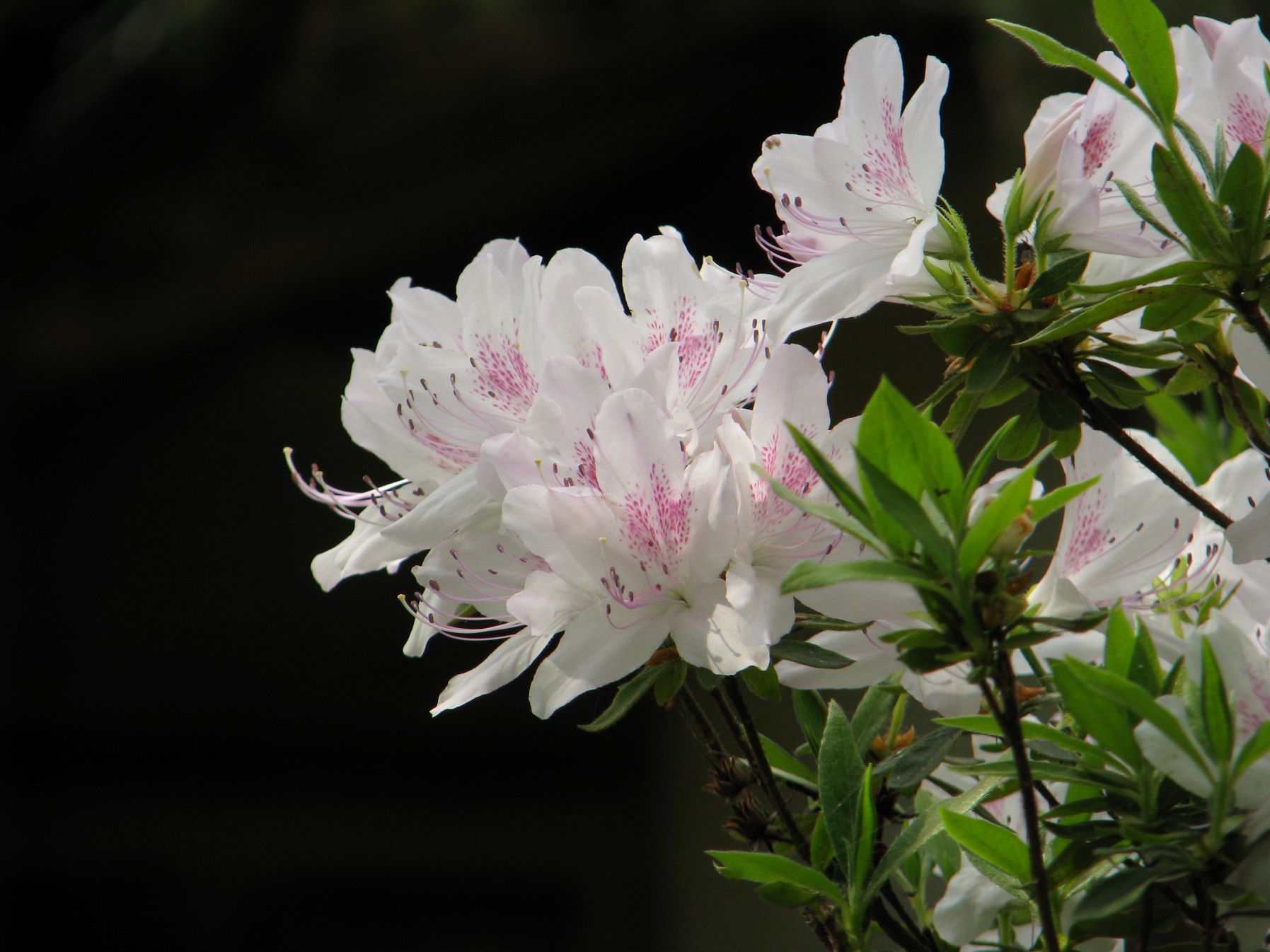Do bonsai trees bloom?
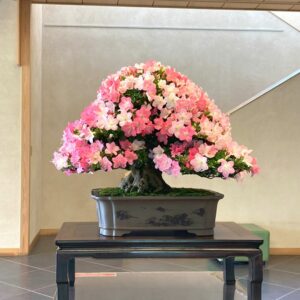
Azalea bonsai
Bonsai trees can bloom even when they are planted in tiny pots, and many of them produce flowers under the right conditions.
The ability of a bonsai tree to flower is primarily determined by 4 factors:
- tree species,
- age (maturity),
- environmental conditions, and
- care practices.
Tree species
The species of bonsai tree you choose to grow plays a significant role (or most important role) in whether it will produce flowers. If you have tree species that do not bloom in any circumstances, your bonsai trees will not flower, as might be expected.
Selecting a flowering species, such as Japanese cherry blossom or azalea, ensures the chance of blooms.
Age
Bonsai trees, or any other plants, need to reach a certain level of maturity before they can produce flowers. Young bonsai trees will not bloom until they’ve reached a certain age and development stage, which can be shortened by bonsai techniques such as wiring.
Environmental conditions
Temperature
Temperature plays a significant role in flower formation for flowering bonsai trees. Each bonsai tree species needs a specific temperature range for flower initiation and development.
Season
Bonsai trees bloom in a specific season. Flower buds are generally formed in the spring to summer of the previous year. After being exposed to winter cold and then to warm temperatures in spring, these flower buds start to bloom.
Day/night length
For some bonsai tree species, such as camellia (long-day) and Kurume azalea (short-day), one of the key factors influencing flower bud initiation is the duration of light and darkness they receive within a 24-hour period.
That said, the flower bud formation is NOT predominantly controlled by day/night length for most of the deciduous flowering bonsai species.
Care practices
Fertilization
The availability and balance of essential nutrients in the soil are crucial factors for bonsai trees’ flowering. Using the right type and timing of fertilizer will support flower development and bloom.
Watering
Water is essential in cultivating healthy and robust bonsai trees and plays a crucial role in flower bud development. Watering practices should align with the specific needs of the bonsai species.
To dig deeper into factors affecting the flowering of bonsai trees, the following article is all about it.
Do any bonsai trees bloom?

Weeping cherry bonsai
Not all bonsai trees bloom. Angiosperms (flowering trees) such as cherry blossoms and maple produce flowers while gymnosperms (non-flowering trees) such as pines and junipers do not bloom. They produce cones as their reproductive structures.
What are flowers?
A flower is a reproductive structure in plants, particularly in “angiosperms”, which is a botanical term for a group of plants that produce flowers.
There is a tremendous variety of flowers in color, form and size, but all have some characteristics in common: they all have an enclosed ovary inside the flower, which contains and protects the developing seeds.
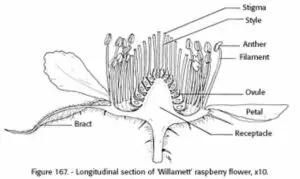
Ovary of a flower
Flowers have “male” and “female” parts (stamens and pistils) and a flower may have exclusively male parts, exclusively female parts, or commonly, both.
Flowering and non-flowering bonsai trees
Not all bonsai trees have flowers; some bonsai trees bloom while others do not. A flower is a reproductive organ and trees may be categorized into the following two main groups based on how they reproduce. This distinction defines whether they have flowers or not.
- Angiosperms
- Gymnosperms
Angiosperms (Flowering Trees)
Angiosperms are a group of plants that produce flowers as part of their reproductive process. These flowers contain reproductive structures, including male (stamens) and female (pistils) parts, and they eventually develop into fruits that contain seeds.
Many deciduous bonsai trees, such as cherry blossom, maple and oak trees, belong to the angiosperm group and produce flowers.
Gymnosperms (Non-Flowering Trees)
Gymnosperms, on the other hand, do not produce true flowers. Instead, they produce cones as their reproductive structures.
Common gymnosperm bonsai trees include juniper, pine, spruce, and cedar trees. These trees produce male and female cones, with pollen from male cones fertilizing the seeds inside the female cones.
(BTW, juniper berries are not fruits like strawberries but are modified cones.)
Evolution of plants
There is an evolutionary background in how plants, including bonsai trees, reproduce.
The plant life began almost 500 million years ago in the ocean. One of the major steps of plant evolution is seed reproduction that happened around 350 million years ago, which ultimately led to the emergence of gymnosperms around 319 million years ago.
Gymnosperms began dominating the Earth’s landscapes around 240-205 million years ago thanks to the innovation of seeds and pollen, allowing them to adapt to drier environments.
Around 150 million years ago, angiosperms appeared in the fossil record. They are known for their specialized seeds formed inside the ovary of a flower, enclosed by a protective fruit. Flowers attracted other life forms, particularly pollinating insects, which played a crucial role in their evolutionary success.
The key difference between gymnosperms and angiosperms lies in their seeds. Gymnosperms have “naked” seeds formed in unisexual cones, while angiosperms have a diversity of seed protection methods, often enclosed within fruits.
As angiosperms have developed diverse varieties of pollen dispersal, they are nowadays the most diverse group of plants on Earth. In fact, angiosperms dominate the plant world with an estimated 300,000-500,000 species, compared to a mere 1,000 species of gymnosperms.
Common flowering bonsai trees
There are several common flowering bonsai trees that are popular among bonsai growers. Here are some of them:
- Azalea
- Wisteria
- Cherry blossom
- Rose
Azalea Bonsai

Azaleas are prized for their vibrant and colorful flowers, which can range from red and pink to purple and white, and are one of the most popular flowering bonsai species around the world. They are easy to bonsai and are perfect for beginners.
Wisteria Bonsai

Wisteria bonsai produce cascading clusters of purple, pink or white pea-like flowers with exquisite scent. It is a symbol of fortune and longevity as well.
Japanese Cherry Blossom
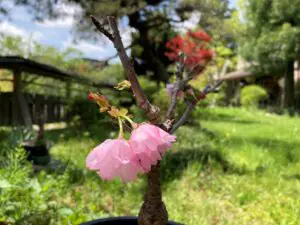
My cherry blossom bonsai
With their iconic pink flowers, cherry blossom bonsai brings an exquisite spectacle when they burst into bloom. The sight of delicate pink petals opening is nothing short of captivating.
Rose bonsai
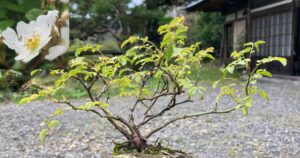
Rose is one of the most popular flowering bonsai species. Though its history is shorter, rose bonsai are cultivated for the past 150 years. Wild roses are more suitable for bonsai due to their “natural” look that may be lost in other extravagant cultivars.
For more information about flowering bonsai trees, please check the following article.
—–
References
Angiosperms vs Gymnosperms, University of Illinois, College of Agricultural, Consumer & Environmental Sciences

